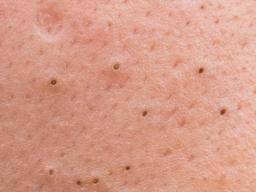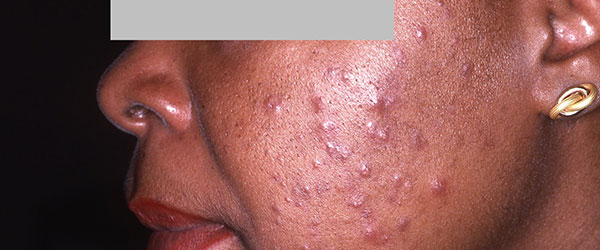What is Acne? Its causes, types of Acne, prevention
Acne is a common skin condition that happens when hair follicles under the skin become clogged. Oil and dead skin cells plug the pores, and outbreaks of lesions (often called pimples or zits) can happen. Most often, the outbreaks occur on the face but can also appear on the back, chest, and shoulders.
Causes of Acne
For most people, acne tends to go away by the time they reach their thirties, but some people in their forties and fifties continue to have this skin problem.too much oil is produced by your follicles
dead skin cells accumulate in your pores
bacteria build up in your pores
These problems contribute to the development of pimples. A pimple appears when bacteria grows in a clogged pore and the oil is unable to escape.
Types of acne
mainly there are two types of acne. Following the others which are listed below:No inflammatory acne
No inflammatory acne includes blackheads and whiteheads. These normally don’t cause swelling. They also respond relatively well to over-the-counter (OTC) treatments.Salicylic acid is often marketed for acne in general, but it usually works best on no inflammatory acne. It naturally exfoliates the skin, removing dead skin cells that can lead to blackheads and whiteheads. Look for it in cleansers, toners, and moisturizers.
Blackheads
Blackheads occur when a pore is clogged by a combination of sebum and dead skin cells. The top of the pore stays open, despite the rest of it being clogged. This results in the characteristic black color seen on the surface.Whiteheads
Whiteheads can also form when a pore gets clogged by sebum and dead skin cells. But unlike with blackheads, the top of the pore closes up. It looks like a small bump protruding from the skin.Whiteheads are more difficult to treat because the pores are already closed. Products containing salicylic acid can be helpful. Topical retinoids give the best results for comedonal acne. Currently, ada
palene (Differin) is available over the counter as a
retinoid. If it does not work for you, stronger topical retinoids are available
by prescription from your dermatologist.
Inflammatory Acne
Pimples that are red and swollen are referred to as inflammatory acne.Although sebum and dead skin cells contribute to inflammatory acne, bacteria can also play a role in clogging up pores. Bacteria can cause an infection deep beneath the skin’s surface. This may result in painful acne spots that are hard to get rid of.
Products containing benzoyl-peroxide may help reduce swelling and get rid of bacteria within the skin. These can also remove excess sebum. Your doctor may prescribe either an oral or topical antibiotic along with the benzoyl-peroxide to treat your inflammatory acne. Topical retionoids are also an important part of combatting inflammatory papules and pustules.
Papules
Papules occur when the walls surrounding your pores break down from severe inflammation. This results in hard, clogged pores that are tender to the touch. The skin around these pores is usually pink.
Pustules
Pustules can also form when the walls around your pores break down. Unlike papules, pustules are filled with pus. These bumps come out from the skin and are usually red in color. They often have yellow or white heads on top.Nodules
Nodules occur when clogged, swollen pores endure further irritation and grow larger. Unlike pustules and papules, nodules are deeper underneath the skin.Because nodules are so deep within the skin, you can’t typically treat them at home. Prescription medication is necessary to help clear these up.
Your doctor or dermatologist will likely prescribe the oral medication isotretinoin (Sotret). This is made from a form of vitamin A and is taken daily for four to six months. It can treat and prevent nodules by decreasing oil gland size within the pores.
Cysts
Cysts can develop when pores are clogged by a combination of bacteria, sebum, and dead skin cells. The clogs occur deep within the skin and are further below the surface than nodules.These large red or white bumps are often painful to the touch. Cysts are the largest form of acne, and their formation usually results from a severe infection. This type of acne is also the most likely to scar.
The prescription medication isotretinoin (Sotret) is commonly used to treat cysts. In severe cases, your dermatologist may surgically remove a cyst.
How to Treat Acne
Treatment for mild acne starts with topical antibiotics, retinoids (vitamin A
based topicals), anti-inflammatory agents and benzoyl peroxide. Cortisone
injections may be utilized to rapidly shrink cystic lesions (same day
appointments available when needed).Acne surgery may be performed to extract black and whiteheads. In more severe cases, antibiotic pills are often prescribed. In some women, hormonal treatments may also be recommended. If your acne doesn’t respond or is extremely severe and scarring, oral isotretinoin may be utilized. Treating acne is a relatively slow process; there is no overnight remedy. Some treatments include:
Benzoyl Peroxide: Used in mild cases of acne, benzoyl peroxide reduces the blockages in the hair follicles.
Oral and Topical Antibiotics: Used to treat any infection in the pores.
Hormonal Treatments: Can be used for adult women with hormonally induced acne.
Tretinoin: A derivative of Vitamin A, tretinoin helps unplug the blocked-up material in whiteheads/blackheads. It has become a mainstay in the treatment of acne.
Extraction: Removal of whiteheads and blackheads using a small metal instrument that is centered on the comedone and pushed down, extruding the blocked pore.
Hope this article helps you to get you what you want.









0 Comments